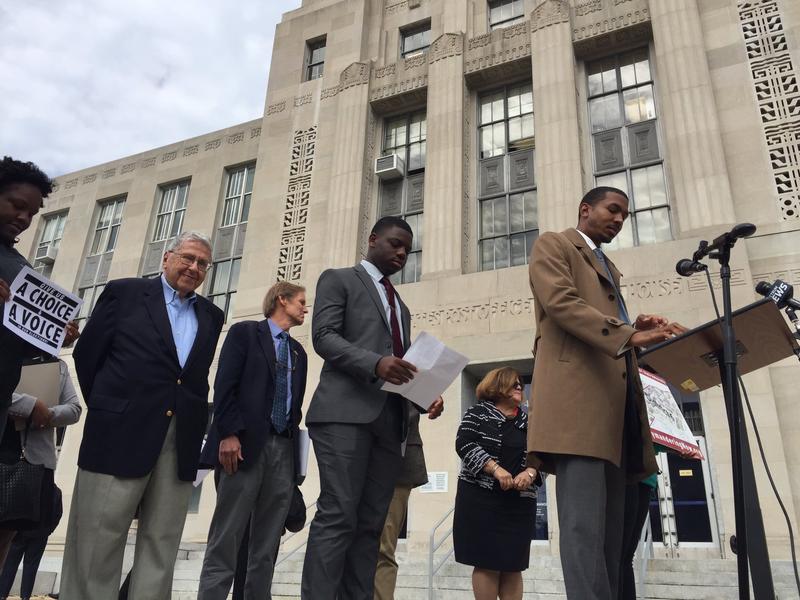
This episode currently has no reviews.
Submit Review- Podcast |
- Undiscovered
- Media Type |
- audio
- Podknife tags |
- Science & Medicine
- Publication Date |
- Oct 30, 2018
- Episode Duration |
- 00:29:38
In 2016, a North Carolina legislator announced that his party would be redrawing the state’s congressional district map with a particular goal in mind: To elect “10 Republicans and three Democrats.” His reasoning for this? As he explained, he did “not believe it’s possible to draw a map with 11 Republicans and two Democrats.”
It was a blatant admission of gerrymandering in a state already known for creatively-drawn districts. But that might be about to change. A North Carolina mathematician has come up with a way to quantify just how rigged a map is. And now he’s taking his math to court, in a case that could end up redrawing district lines across the country.
Guests
Jonathan Mattingly, professor of mathematics and statistical science, Duke University
Braxton Brewington, undergraduate senior, North Carolina A&T State University, senior democracy fellow, Common Cause North Carolina
Bob Phillips, executive director, Common Cause North Carolina
Footnotes
Read about Jonathan and his students’ analyses of North Carolina’s 2012 and 2016 congressional maps (and check out the rest of their work on gerrymandering)
See North Carolina’s congressional map, which a federal court declared unconstitutional in 2018
Read the District Court’s opinions from January 2018, declaring North Carolina’s 2016 congressional map unconstitutional
Watch Representative David Lewis make his comments before the state legislature's joint select committee on congressional redistricting
Read about the history of Common Cause’s lawsuit: Common Cause v. Rucho
Read about other partisan gerrymandering court challenges
Read about Common Cause v. Rucho’s prospects at the scotus-gerrymandering.html">Supreme Court
Credits
This episode of Undiscovered was produced by Elah Feder and Annie Minoff Our senior editor is Christopher Intagliata, our composer is Daniel Peterschmidt, and our intern is Kaitlyn Schwalje. Our theme music is by I Am Robot And Proud. We had fact checking help from Robin Palmer. Eddie Garcia was our reporter on-the-ground at A&T.
Special thanks this week to Thomas Wolf and the Brennan Center for Justice, Justin Levitt, Gregory Herschlag, and Jonathan Mattingly’s Data+ team.
In 2016, a North Carolina legislator announced that his party would be redrawing the state’s congressional district map with a particular goal in mind: To elect “10 Republicans and three Democrats.” His reasoning for this? As he explained, he did “not believe it’s possible to draw a map with 11 Republicans and two Democrats.”
It was a blatant admission of gerrymandering in a state already known for creatively-drawn districts. But that might be about to change. A North Carolina mathematician has come up with a way to quantify just how rigged a map is. And now he’s taking his math to court, in a case that could end up redrawing district lines across the country.
In 2016, a North Carolina legislator announced that his party would be redrawing the state’s congressional district map with a particular goal in mind: To elect “10 Republicans and three Democrats.” His reasoning for this? As he explained, he did “not believe it’s possible to draw a map with 11 Republicans and two Democrats.”
It was a blatant admission of gerrymandering in a state already known for creatively-drawn districts. But that might be about to change. A North Carolina mathematician has come up with a way to quantify just how rigged a map is. And now he’s taking his math to court, in a case that could end up redrawing district lines across the country.
This episode currently has no reviews.
Submit ReviewThis episode could use a review! Have anything to say about it? Share your thoughts using the button below.
Submit Review

